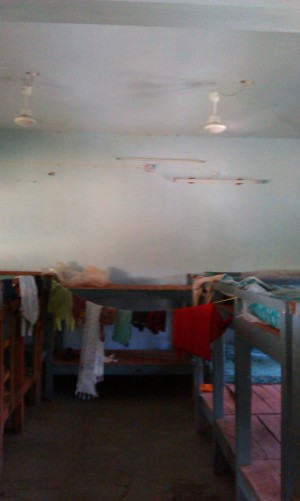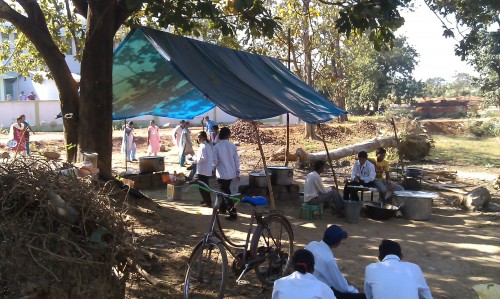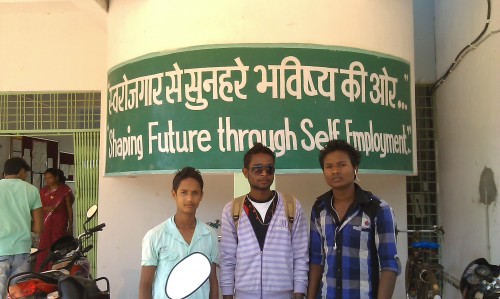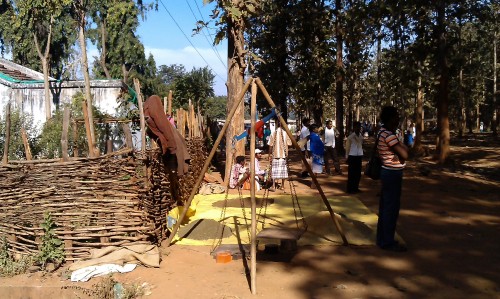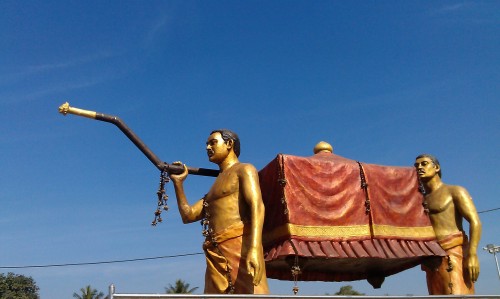By the time most of us are done with our teenage years, we begin our irreversible march towards becoming chronic cynics. We choose our lovers, careers, friends and ambitions – all of it with cynicism at the core of it. We euphemize this with terms like being realistic, pragmatic, mature, etc and we get away with it because the people we are giving this justification to are also a part of this sham. We view election results, rape case proceedings, cricket matches, et al with that same practiced cynicism and hence fail to analyze, evaluate and act. We carry this cynicism to places where it should have no business – the workplace, the first date and, the most significant, the classroom.
(For earlier posts on Kashmir, Amritsar, Mcleodgunj, Mussoorie,Delhi-Gurgaon, Mughal Sarai – Varanasi, Bangalore,Pondicherry, Hyderabad, Puri click here : Baazigar Series)
Most people reading this belong to a privileged class with access to great education. The thing is, our cynicism has always ensured that we under-valued this education. It was a means to a job, a salary, a designation, a social standing, an educated life partner, a certain standard of living. And while it is one thing to always know deep down that education is much more, but here in Dantewada, I witnessed education help maintain peace and foster development on a daily basis.
It took a lot of luck to reach Dantewada from Puri. You can read about it here. Once I was here, I had no traditional sight-seeing to do. In fact I had no clear plan. All I knew was I was going to be part-journalist, part-tourist here. It wasn't a tourist destination – it was a war-torn region because of the Naxalite-State issue plaguing the region. I knew about the Livelihood College here and thought that would be the best place to begin. I created a fake identity of a journalist and the Nodal Officer at the college was more than happy to entertain me. Now Livelihood is a pioneering concept by the Chhatisgarh government to provide vocational training to the naxal-affected adivasi youth in the region to take up courses to become electricians, motor mechanics, call center operators, plumbers, salesmen, tailors, hotel staff, etc. The government has tied up with Essar, Pearson education, IL&FS and many other organizations to impart training in various fields and finally provide certification and employment. Prima facie, the Public Private Partnership seemed to be working very well. Apart from minor quibbles like need to provide more access to Sarpanches in the villages to mobilize more students, faster bureaucratic clearances, etc, the corporates were quite happy with the Government’s support. The Government on the other hand, wanted more teachers and trainers to come on board from the corporates’ side which, as the immediate threat to life in the region comes down, will be easier to bring in. There are more than 1000 teenagers being provided training, lodging and boarding right now and the number is only increasing. One interesting observation – while placements are available in places like Tirupur, Nagpur, Raipur and Chennai, a lot of them don’t want to leave Dantewada as they feel they want to be able to help their kin and community. The students like it here at the Livelihood College for several reasons – better living conditions than the forest police camps most of them come from, weekly screening of Hindi films like Taare Zameen Par and Chak De India, free clothes, food and shelter. On the last day there, the Nodal Officer made me address a class of 200 people saying he felt they will feel great if someone from Mumbai would talk to them and encourage them. I did the best I could but I am sure I gained more from meeting them than they did from meeting me.
Pic 1 – The living quarters at the college. Please apply theory of relativity.
Pic 2 – Lunch time
Pic 3 – The cool gang of the Livelihood College
I also got a chance to visit the Government run primary and pre-primary school in Dantewada. By now I had mastered the art of masquerading as a journalist and after the initial hesitance, the head mistress was forthright and helpful. She told me about the entire education structure modified to suit the specific needs of a war-torn state. There was a system of public and private schools in every district and Gurukuls which would bring kids who have been affected by Naxal violence into the fold and ensure they are admitted into private schools. These kids’ progress and attendance would be followed more stringently. There were Livelihood Colleges and Graduate Colleges being built across the region with different versions of the Public-Private Partnership model. She was so enthusiastic to help that she even called in her husband to talk to me. The problem was he was an editor of the local edition of Nai Duniya and he asked me questions about my apparent organization that I had no clue of. He took special interest in my work and I knew I had to get the hell out of there fast enough. But before I did that, I got a chance to tape a live class at the school. It served no purpose except to remind us all that we were right there not so long ago – all eager and excited – only to be fleeced by adulthood later on.
This rich vein of education goes beyond the schools into the adult world where labourers, lumberjacks and farmers are being introduced to a system of banking where each would have multiple bank accounts – one into which all the income from sale of farm produce and timber to Government will be debited and another would be a fixed deposit account where a portion of the said income would be deposited – this FD will help pay insurance premium for the said workers. It’s nothing ingenious – the best part is that it is working efficiently so far.
Pic 4 - The Wednesday Market where the adivasis come from the jungles to sell their produce
There is no easy answer to the Naxalite problem. The fear of corporate imperialism is real and fair. Simply because others have accepted this imperialism, doesn’t mean they should. And the Naxal problem isn’t limited to Chhatisgarh – it has its tentacles in Jharkhand, West Bengal, Orissa, Madhya Pradesh, Andhra Pradesh as well. There is palpable hatred towards the Police and the Salwa Judum among the people for the atrocities done at the camps. But there is also gratefulness towards the Government for the efforts put in for education and development. The only fear is it doesn’t turn out to be a carrot dangled to lure them out and then take away their homes. The Naxals, on the other hand, don’t help matters by burning down bridges under construction and forced recruitment The theme of my story is also about this complicated situation where the hero and the villain are both the same people. The adivasis themselves follow a maternal system. The property is passed down from mother to daughter. The Mahua tree which is considered by them as the Kalpavriksha provides the men with the alcohol to drink and make merry and the women with the timber to sell and make money. Maa Danteshwari is the most important goddess in the region. The teachers college is swarming with young girls trying to get their BEd degrees and then go back to the jungles and teach children of their community. Meanwhile, we in the civilized world fight a losing battle against man’s need to show his power and dominion over woman in the ugliest of ways. My professor used to say “It’s the educated that needs to be educated.”
Pic 5 – The entrance to the Maa Danteshwari Temple
I now move to Kanha. After a rather serious trip, this one is drenched in nostalgia for a more innocent time in my life – of The Jungle Book and the search for that elusive sight I have not been privileged to witness this far – a full grown Royal Bengal Tiger in the wild, strolling as the lord of all that he surveys.
- Kunj Sanghvi
(For earlier posts on Kashmir, Amritsar, Mcleodgunj, Mussoorie,Delhi-Gurgaon, Mughal Sarai – Varanasi, Bangalore,Pondicherry, Hyderabad, Puri click here : Baazigar Series)
(Kunj Sanghvi will be writing about his experiences in each new city every week on InsideIIM.com. At various junctures on this trip, he’ll be found working over cups of coffee in coffee shops across the country. He’d love to meet, talk, discuss with anyone who’d care to meet him; just to know the city and its people better. Follow him on twitter here – @kunjsanghvi. He blogs here.
About Kunj – Kunj Sanghvi is a B.Com graduate from Narsee Monjee College of Commerce and Economics and MBA from Mudra Institute of Communications, Ahmedabad(MICA). Prior to plunging into this adventure he was a Senior Manager at Hindustan Times. He has also worked with whatsonIndia.com in the past. )
You may be interested in :
Results of the InsideIIM Recruitment Survey 2012
